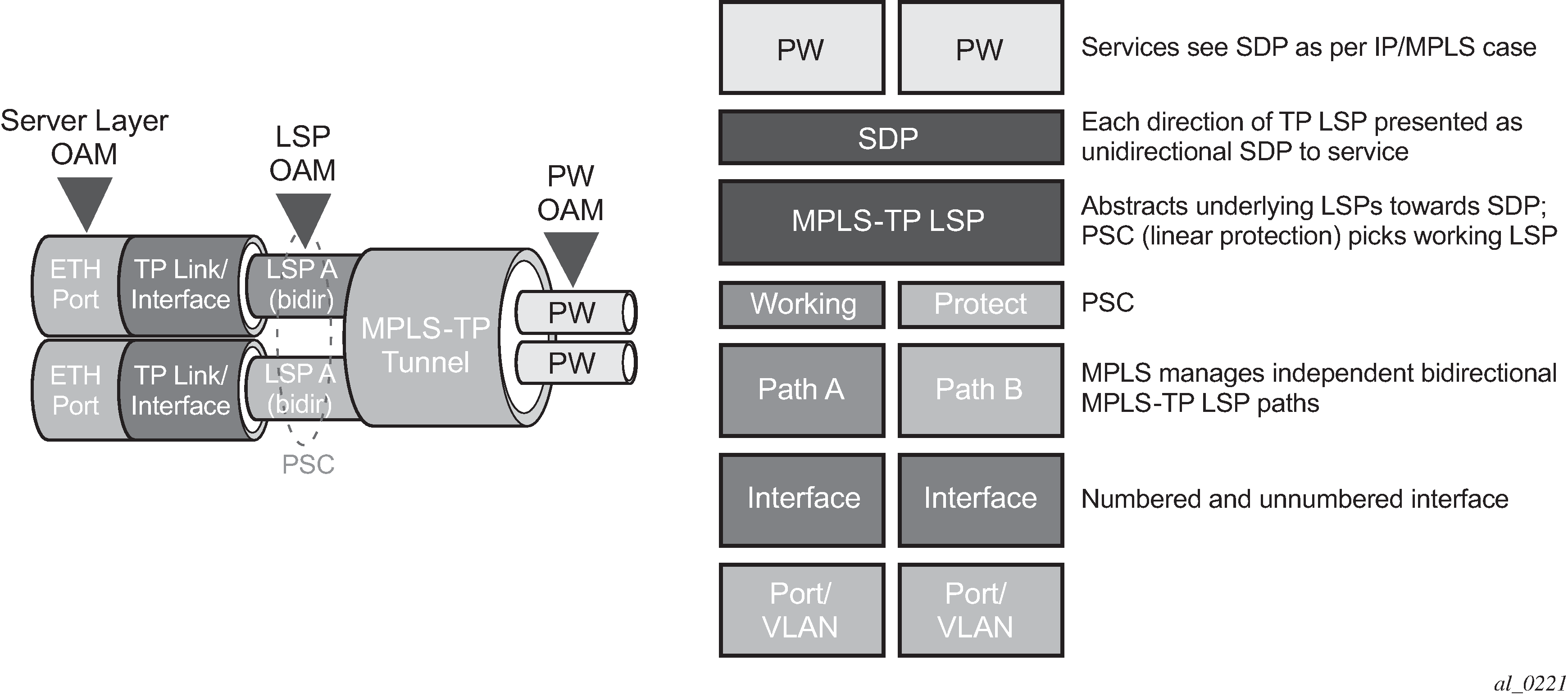Figure 1 shows a high level functional model for MPLS-TP in SR OS. LSP A and LSP B are the working and protect LSPs of an LSP tunnel. These are modeled as working and protect paths of an MPLS-TP LSP in SR OS. MPLS-TP OAM runs in-band on each path. 1:1 linear protection coordinates the working and protect paths, using a protection switching coordination protocol (PSC) that runs in-band on each path over a Generic Associated Channel (G-ACh) on each path. Each path can use either an IP numbered, IP unnumbered, or MPLS-TP unnumbered (that is, non-IP) interface.

All MPLS-TP LSPs are bidirectional co-routed, as detailed in RFC5654. That is, the forward and backward directions follow the same route (in terms of links and nodes) across the network. Both directions are set up, monitored and protected as a single entity. Therefore, both ingress and egress directions of the same LSP segment are associated at the LER and LSR and use the same interface (although this is not enforced by the system).
In the above model, an SDP can use one MPLS-TP LSP. This abstracts the underlying paths toward the overlying services, which are transported on pseudowires. Pseudowires are modeled as spoke SDPs and can also use MPLS-TP OAM. PWs with static labels may use SDPs that, in turn, use either signaled RSVP-TE LSPs or one static MPLS-TP LSP.